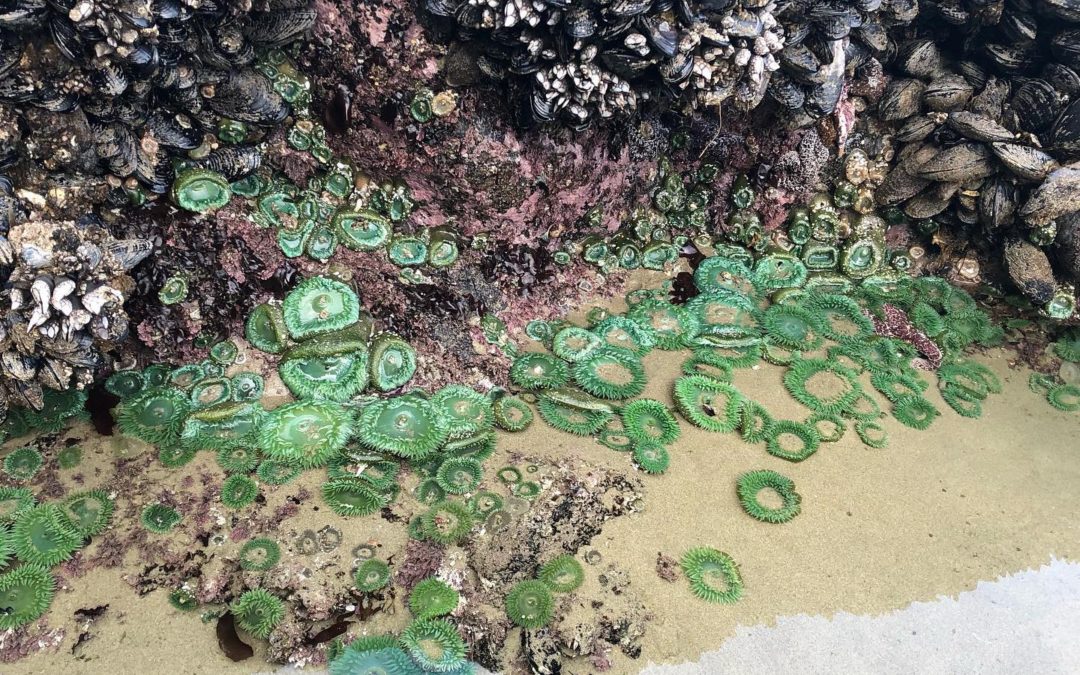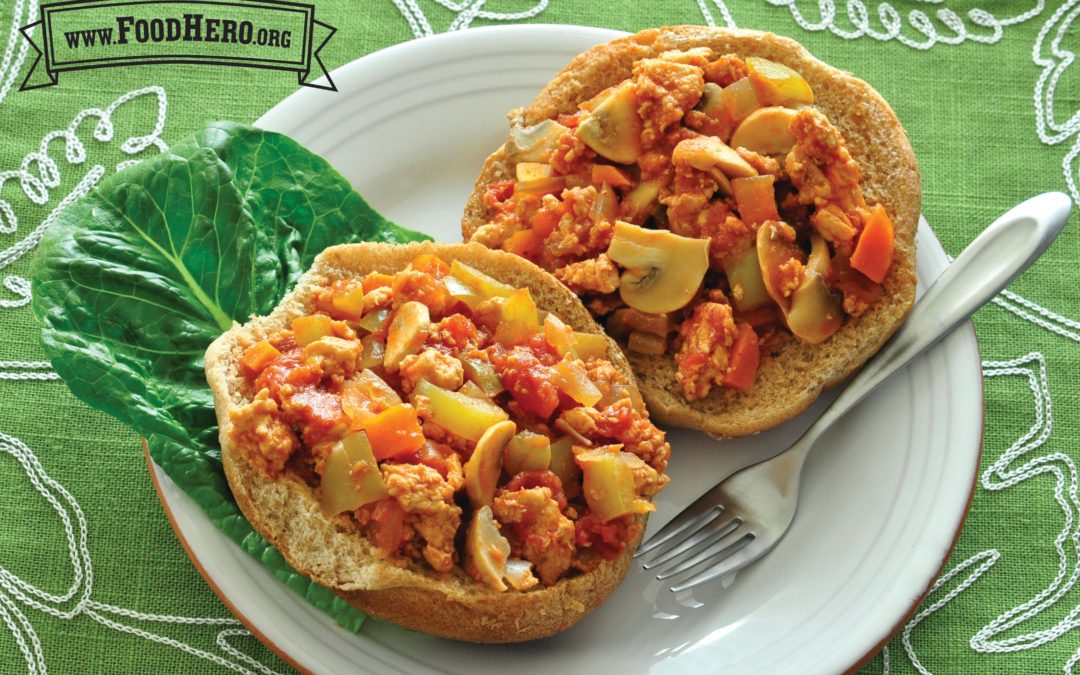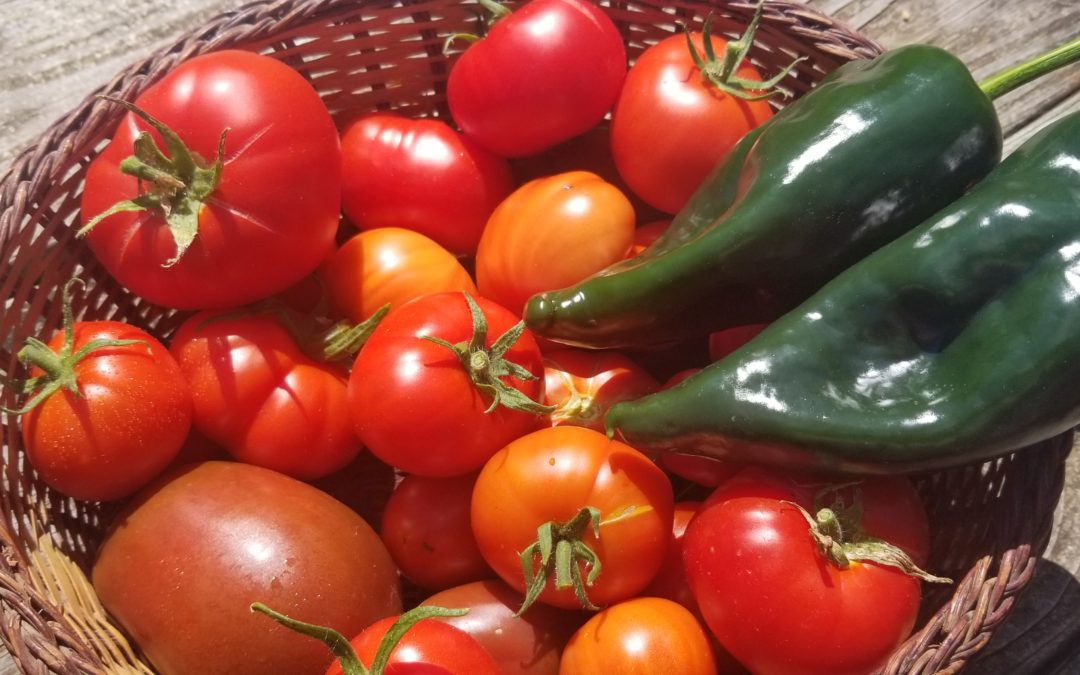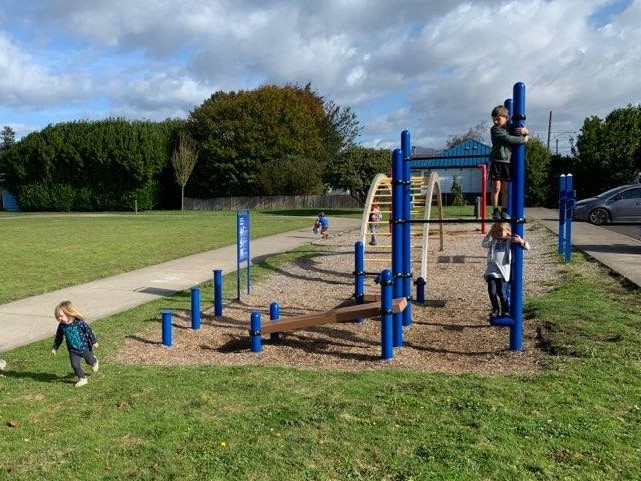
by Guest | Sep 10, 2020 | Move Well
Oregon’s coastline is amazingly beautiful. Many of our beaches are home to rocky intertidal habitats. These are rocky areas located at the edge of the ocean between the high and low tides. What makes rocky intertidal areas so interesting to explore are tide pools! A tide pool is a shallow pool of water left in low places along the shoreline. These pools are visible when the tide is low and covered with water when the tide is high. Many plants and animals live in tide pools which are found all around the world. Wherever there’s a rocky seashore, there are tide pools. Including here in Tillamook County!
Life in tide pools is dynamic and amazing. When you venture out to the rocky shore, look for layers of habitats. Check out the life living at the edge of the sand and then scan your eyes up along the rocks. The first thing you may notice is how much life is living in these areas! The rich diversity that can be found is astounding. Next, you will notice that the community of animals and plants change as you move from the wet, low areas to the higher (and drier) ones. The intertidal area is divided into different regions: the splash zone, high tide zone, mid tide zone, and low tide zone. Animals and plants living in the splash zone only need a spray of water to survive. Here you will find tiny acorn barnacles, limpets, and snails. This is the opposite of the low tide zone, a place that is typically under water except during the lowest tides. In these locations, you will find different algaes, sea slugs, sponges, and more. Maybe the most obvious break is between the low-tide zone and the mid-tide zone. The mid-tide zone is home to mussels, and there is a clear line that forms here. Mussel habitat is bound by the high tide zone, which is too dry, and the range of sea stars(a major predator) in the low tide zone.
When visiting the beach and tide pools, follow these easy steps to keep you, your group, and the plants and animals in these areas safe.
Know where to go! Do a little research to find out which beaches offer the best tide pools for your group. Not all tide pool areas are easy to get to. Some locations have tide pools in areas that get cut off as the water rises and starts to flood the beach during high tide. This can create a dangerous situation for you and your group.
Know when to go! Go during a nice low tide. When I go out with my family or take out groups to learn more about tide pools, I aim for 1 to 2 hours before the predicted negative low tide (-0.8 feet or lower). Check a tide book or use any of a number of great online tools to find out when the tide will be low on your favorite beach. Every location is different, but the lower the tide the better the experience. The best times to tide pool usually occur in the late spring and summer months.
Keep an eye on the ocean! Even when the tide is predicted to be very low, many things can change the water level on the beach. Local and offshore weather can affect how flooded the beach is. At any time, large waves can surprise you on the beach. Always face the ocean and watch out for sneaker waves.
Watch your step! Step carefully when exploring. The rocks are full of living plants and animals. Walk on bare sand or rocks when investigating the tide pools. Remember to protect yourself while exploring. Avoid bare feet, flips flops or shoes that easily come off. Opt for something sturdy with a closed toe and good tread. Remember, your feet will likely get wet.
Be gentle! I encourage people to explore and feel the tide pools but to touch gently using 1 or 2 fingers. Never poke or try to pull animals off the rock. This may hurt or kill the animal. Some animals are territorial and a rival may not be welcoming if you move them to a new pool.
A great way to learn more is to hook up with a local organization or agency. Explore Nature partners (like us – Friends of Netarts Bay WEBS) and Oregon State Parks offer great opportunities to learn about life in the rocky intertidal and how to safely explore. Audubon Society of Lincoln City (ASLC) and the North Coast Rocky Habitat Coalition (NCRHC) work to identify and conserve sensitive rocky shore areas for future generations. These groups offer great ways to discover more about the wonders of Oregon’s rocky shores! * alternate below
Animals and plants living in our tide pools have many interesting adaptations that help them survive. From strategies to help them not dry out to avoiding predators, the more you discover the more fascinating it gets! Explore, learn and take care of these special places.
There are many great print and online resources. Checkout a book from the library or any of these recommended sites:
AUTHOR: Chrissy Smith, Director of Friends of Netarts Bay – Watershed, Estuary, Beach, and Sea (WEBS)
Photo Source: WEBS
For more local health and wellness information, follow Tillamook County Wellness on Facebook, Instagram and Twitter.

by Guest | Sep 10, 2020 | Recipes
Number of servings: 6 sandwiches
Time for preparation (including preparation & cooking): 30 minutes
Ingredients
- 1 onion, chopped
- 1 carrot, chopped or shredded
- 1 green pepper, chopped
- 1 pound lean ground meat (15% fat) (turkey, chicken, or beef)
- 1 can (8 ounces) tomato sauce
- 1 can (15 ounces) whole tomatoes, crushed
- 1 can (8 ounces) mushrooms or 1/2 pound chopped fresh mushrooms
- 1⁄4 cup barbecue sauce
- 6 whole wheat buns, split in half to make 12
Directions
- Saute onions, carrots, green pepper and ground meat in a 2-3 quart saucepan over medium-high heat for 5 minutes.
- Add tomato sauce, crushed tomatoes, mushrooms and barbecue sauce.
- Bring to a boil. Reduce heat and simmer for 15 to 20 minutes or until thick, stirring occasionally.
- Toast buns if desired. Spoon sauce over bun halves. Serve open-faced.
- Refrigerate leftovers within 2 hours.
Notes
- Add your favorite fresh, canned or frozen chopped vegetables.
- Try whole wheat English muffins instead of buns.
Recipe & Photo Source: https://www.foodhero.org/recipes/garden-sloppy-joes

by Guest | Sep 3, 2020 | Recipes
Number of servings: 6
Time for preparation (including preparation and cooking): 20 minutes
Ingredients:
- 1 can (5 ounces) tuna in water, drained
- 1⁄4 cup celery, chopped (about 1 stalk)
- 1 green onion, sliced
- 1⁄2 cup carrot, grated
- 1 Tablespoon mayonnaise
- 1⁄4 teaspoon pepper
- 3 whole wheat English muffins
- 1⁄2 cup 2 ounces) grated cheddar cheese
Directions:
- In a small bowl, mix tuna, celery, onion, carrot, mayonnaise and pepper.
- Top each muffin half with tuna mixture and grated cheese.
- Broil until cheese melts, about 3 minutes.
- Refrigerate leftovers within 2 hours.
Photo and Recipe Source: www.foodhero.org

by Guest | Sep 3, 2020 | Move Well
Gardening is a way to take direct control of your access to fresh foods — you are able to provide for yourself, your family, and your neighbors. And you’re also able to make decisions about what it is that you want to eat, and let’s face it, homegrown foods just taste better! My garden has provided even more respite this year. The “chore” of watering is my zen time.
Gardening feeds more than your stomach, it nurtures and fulfills the soul. Growing something is such a wonderful recreational and therapeutic activity for many folks across generations to take part in. According to OSU Master Gardeners there has been a nearly 1,000% increase in questions and class participation in gardening this year in Oregon.
If you are interested in preserving any of your bounty, you might have also encountered a “shortage” of canning jars and supplies. Don’t worry! There are other ways to preserve your veggies and fruit. Consider drying and/or freezing – OSU Extension has several great publications available, including Freezing Fruits & Vegetables and Drying Fruits & Vegetables.
Freezing and drying work well when you just have a few servings to preserve, and especially if your family will be eating it within the next year. While you are harvesting and storing the bounty, remember that we can garden almost year-round here on the temperate (most of the time) Oregon Coast. And there are tips and ideas for “extending the season” – such as cloches and raised beds, the best varieties to grow and now’s the time.
Extend vegetable crop through fall and winter by planting now
You can plant vegetables in late summer/early fall after you harvest crops and as space is available; and in many years you can have a year-round garden. Some of the best vegetables are produced during the warm days and cold nights of fall. Light frost adds sugar to sweet corn and crispness to carrots. Parsnips, kale, collards, Brussels sprouts and Jerusalem artichokes also improve with a touch of frost.
Certain vegetables are better suited to Fall and Winter harvest than others. A complete list of recommended varieties and how to grow them can be found in the eight-page guide Fall and Winter Vegetable Gardening in the Pacific Northwest.
A key to successful fall or winter gardening is location of your garden. Choose the warmest spot you have that is not prone to early frost, avoid the bottom of a hill or an area with lots of bushes and trees. A south-facing slope is best for winter sun. Be sure to restore nutrients removed by spring and summer crops with a light layer of compost or aged manure or a small application of fertilizer. Do not over-fertilize with nitrogen.
During the rainy season, good well-drained soils are essential. Raised beds are best and amend it with organic matter such as compost.
Timely planting is another key to success. Crops need time to become well-established before cold weather and short days curtail growth, but if you plant too early, the young plants can wilt in the heat or mature too soon. Choose the fastest-maturing varieties and pay attention to the average date of the first killing frost in our area, which can vary from mid-October to late November, depending on location. Near the beaches, there might not even be a frost, while up our river valleys there can be several hard frosts in October. Again, raised beds and containers, location, location, location, with cloches or row covers, and you can grow year-round. You can give seeds a head-start in containers or a nursery bed, or buy starts from a garden center.
Brassicas or cole crops such as – brussels sprouts, broccoli, cauliflower and cabbages, will overwinter and continue to produce well into November or December.
Early fall is the time to plant garlic for harvest in late spring next year.
Plant shallots or onions to overwinter and for early crops.
Leafy greens, lettuce, spinach and kale are all “winter regulars” in my deck planters. We really enjoy “microgreens” planted right outside our kitchen to add crunch to sandwiches and salads. We re-grow and re-plant these; another popular microgreen are pea-shoots.
Select your favorite herbs (most are perennials) and plant in containers near your kitchen to be able to add freshness to dishes year-round. Some easy to grow favorites are oregano, thyme, sage and rosemary.
A crop that fails one year because of an unusually early freeze or abnormally cold winter may thrive in a milder year. Be willing to experiment, and don’t give up if your results are less than stellar. Every year is a learning experience – this year it was the chipmunks that kept eating our lettuce seeds (sometimes before they sprouted). Replanting ensued and covers added to prevent critter invasions, and viola! Lettuce rejoice!
For answers to your gardening questions, Tillamook County Master Gardeners are available via phone at 503-842-3433 or email tillamookmastergardener@gmail.com.
The Tillamook County Pioneer has teamed up with Tillamook County Master Gardeners to provide virtual garden tours in 2020. The links for the virtual tours can be found here and here (with more to come).
AUTHOR: Laura Swanson, Master Gardener (Class of 2004)
For more local health and wellness information, follow Tillamook County Wellness on Facebook, Instagram and Twitter.

by Guest | Aug 27, 2020 | Move Well
Tillamook County offers a wide variety of community parks and recreational areas. Whether you are looking to go on a nice stroll, have a family picnic, or take your kids to a jungle gym, you will definitely find a place to go. Remember to review parks and recreational websites for up to date information on changes made for COVID-19 prior to visiting. Keep your distance (6ft) from those not in your immediate household, wash your hands, bring your mask, and pack out what you pack in.
Here is a list of city and community parks in Tillamook County and what they have to offer:
Manzanita
Basketball Court and picnic area
165 S 5th St, Manzanita, OR 97130.
- Basketball courts and picnic tables. Located next to a coffee shop and the old Manzanita fire call which currently housing the Manzanita Police and city hall officials.
Nehalem
Nehalem City Park
12705 Hugo St., Nehalem, OR 97131
- Great community park offering a jungle gym, and an open field
Wheeler
Wheeler Upper Park
Akin St., Wheeler, OR 97147
- Nice open field with a wonderful view
Rockaway Beach
Phyllis Baker City Park
341 N Falcon St., Rockaway Beach, OR 97136
- Community park located in downtown Rockaway Beach. Offers a jungle gym, open field and picnic tables.
Garibaldi
Lumberman’s Memorial Park
3rd St & American Ave, Garibaldi, OR 97118
- Small park at the Garibaldi pier. Offers a jungle gym and picnic tables.
Bay City
Al Griffin Memorial Park
Trade Ave. Bay City, OR 97107
- Great community park in Bay City. Offers a jungle gym, skate park, picnic areas, basketball courts and even camping.
Watt Family Park
Tillamook Ave, Bay City, OR 97107
- Wonderful park that offers a nice big field that is great for dogs.
Tillamook
Hoquarton Park
Hwy 101, Tillamook, OR 97141 near the Hwy 6 and Hwy 101 junction
- Nice walking trail in Tillamook off Highway 101. Great for an afternoon stroll or to take your dog for a walk. Nearly one-mile paved path is also great for wheelchairs, bikes and strollers.
Goodspeed Park
2800 3rd St, Tillamook, OR 97141
- Community park located in Tillamook. Offers a jungle gym, skate park, picnic areas, and basketball courts. Paved path connects Goodspeed Park via pedestrian overpass to the Hoquarton Trail and Park.
Coatsville Park
1404 9th St, Tillamook, OR 97141
- Offers a nice open field, jungle gym, tennis courts, basketball court and picnic tables.
Netarts
Netarts Community County Park
Park Ave., Netarts, OR 97141
- Nice community park with a view of Netarts Bay. Offers picnicking, basketball courts and a grass play area.
Cloverdale
Whalen Island County Park
Whalen Island Rd., Cloverdale, OR 97112
- Offers great walking trails, beach access, picnicking and is dog friendly.
Pacific City
Pacific City Sk8Park
33395 Cape Kiwanda Drive, Pacific City, OR 97135
- Community skatepark with picnic tables, parking, and access to the Pacific Pathways Trail.
We hope this helps you discover a new park in your area. All of these are great for picnics, walks, and time with your family. By visiting a city or community park, you can check off a square on your Explore Your Outdoors BINGO card to enter to win a prize. Cards are available online here or can be picked up at NCRD, the Tillamook Family YMCA and Inn at Cape Kiwanda.
You won’t want to miss out – the adventure ends September 25th!
AUTHOR: Kasey Purcell, Intern, OSU Extension Service
For more local health and wellness information, follow Tillamook County Wellness on Facebook, Instagram and Twitter.






